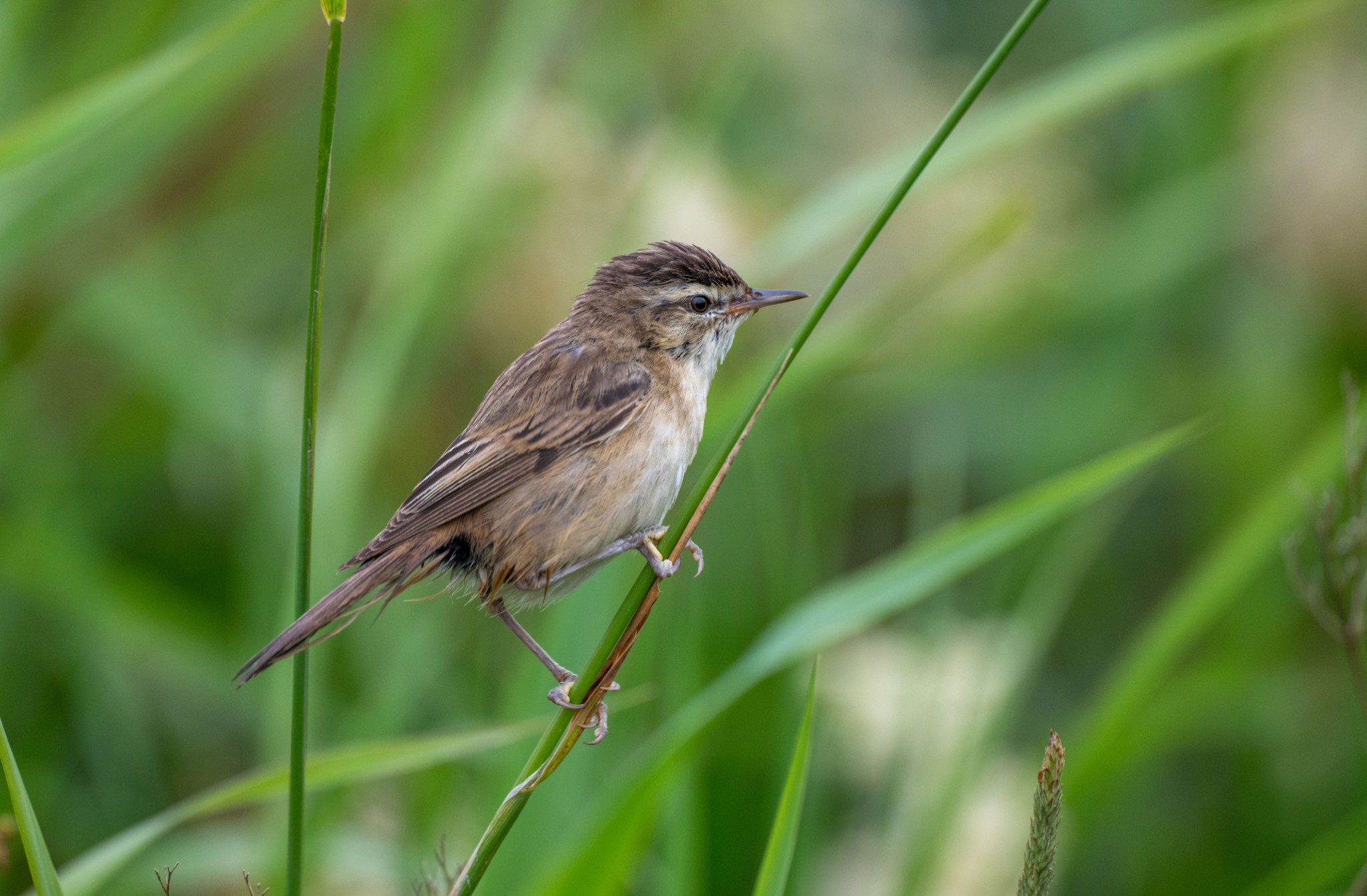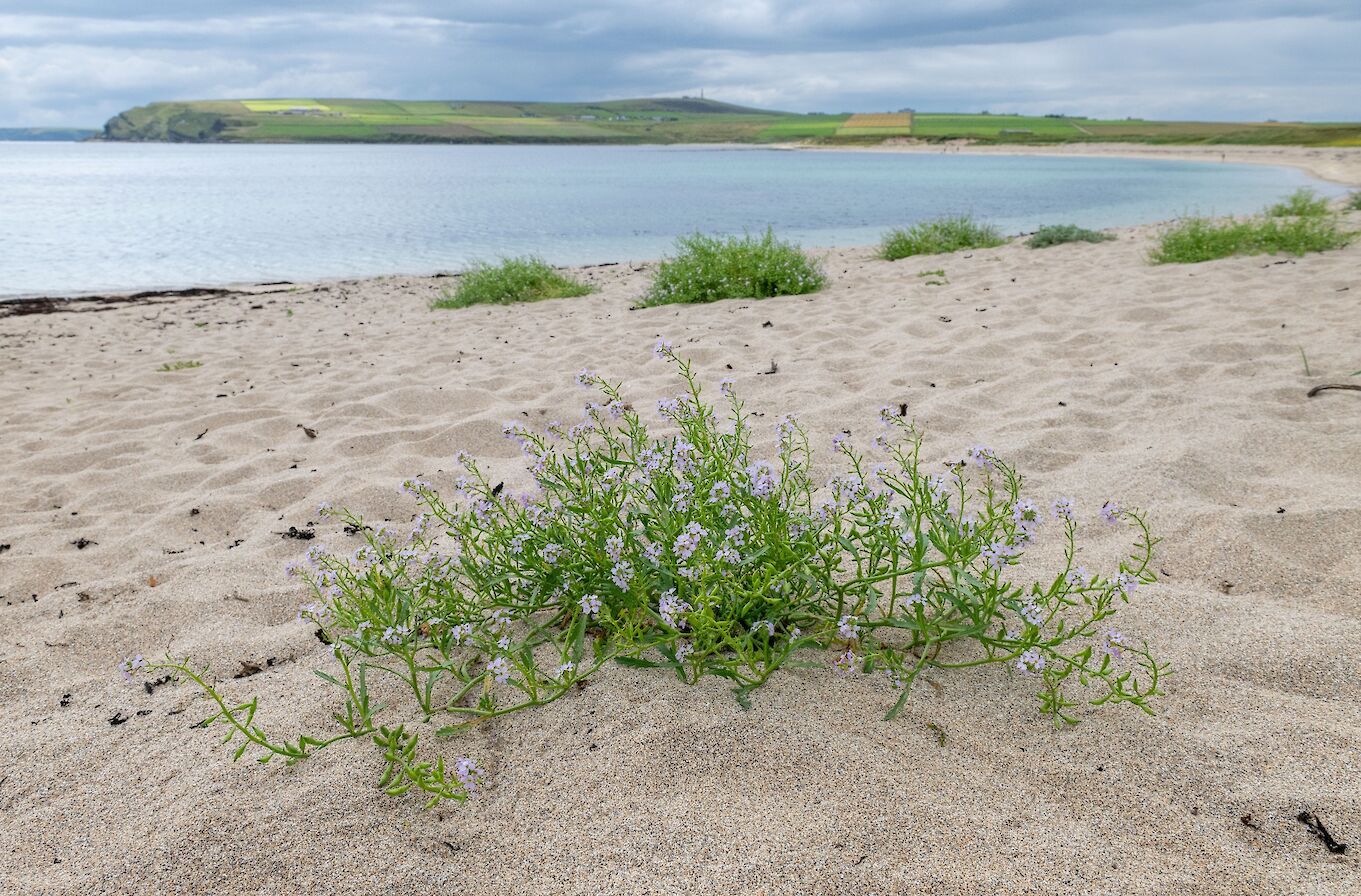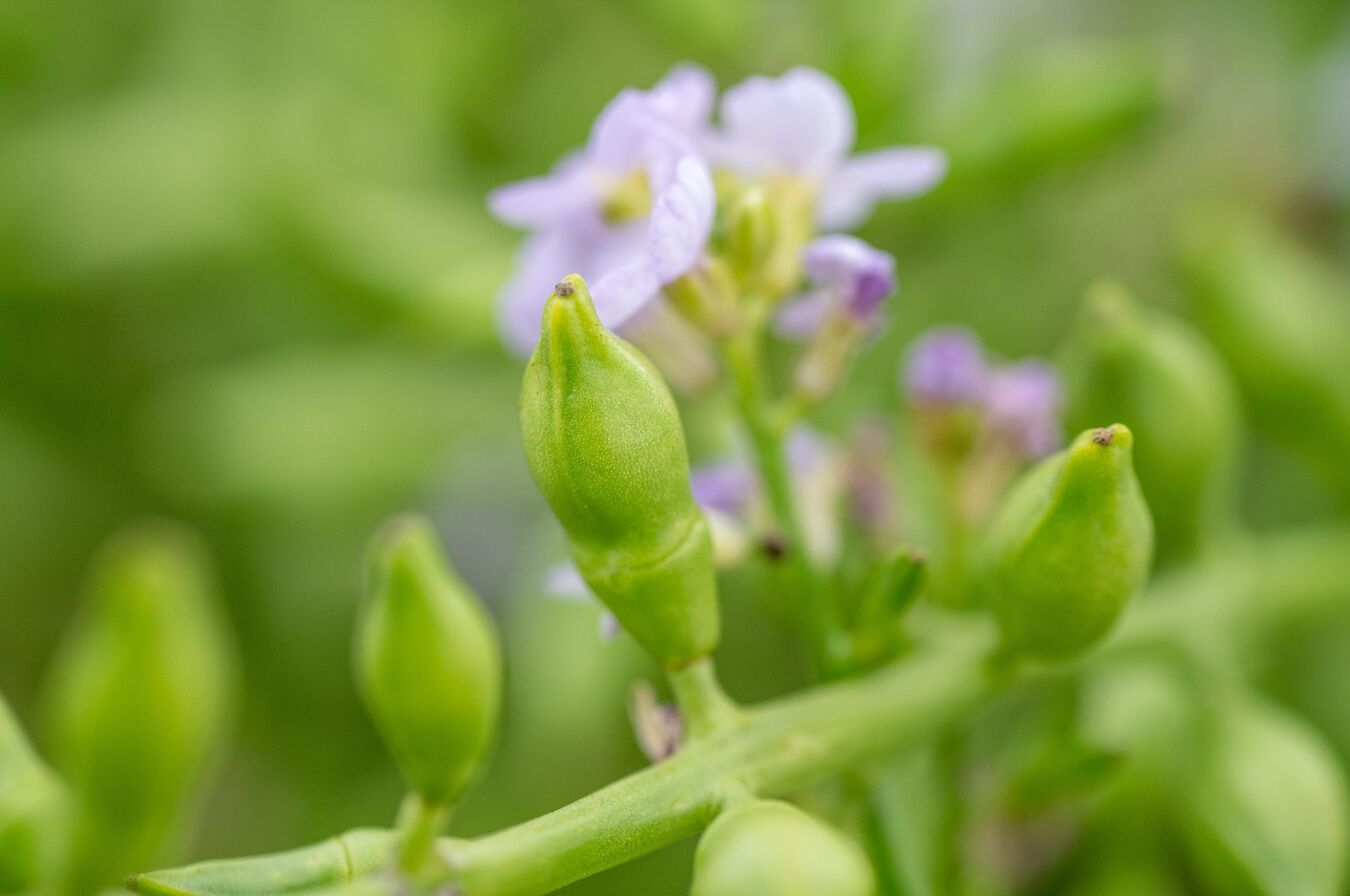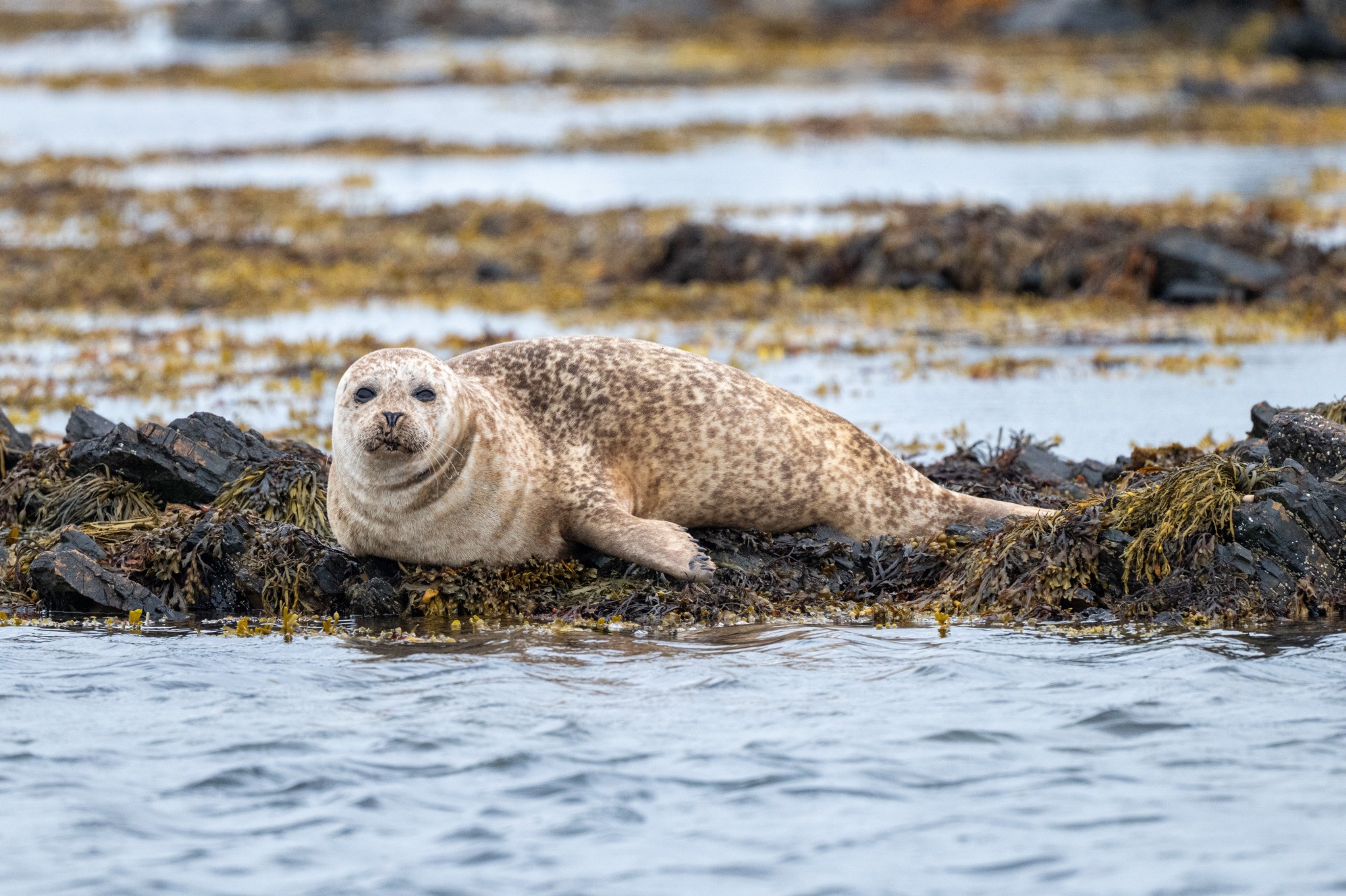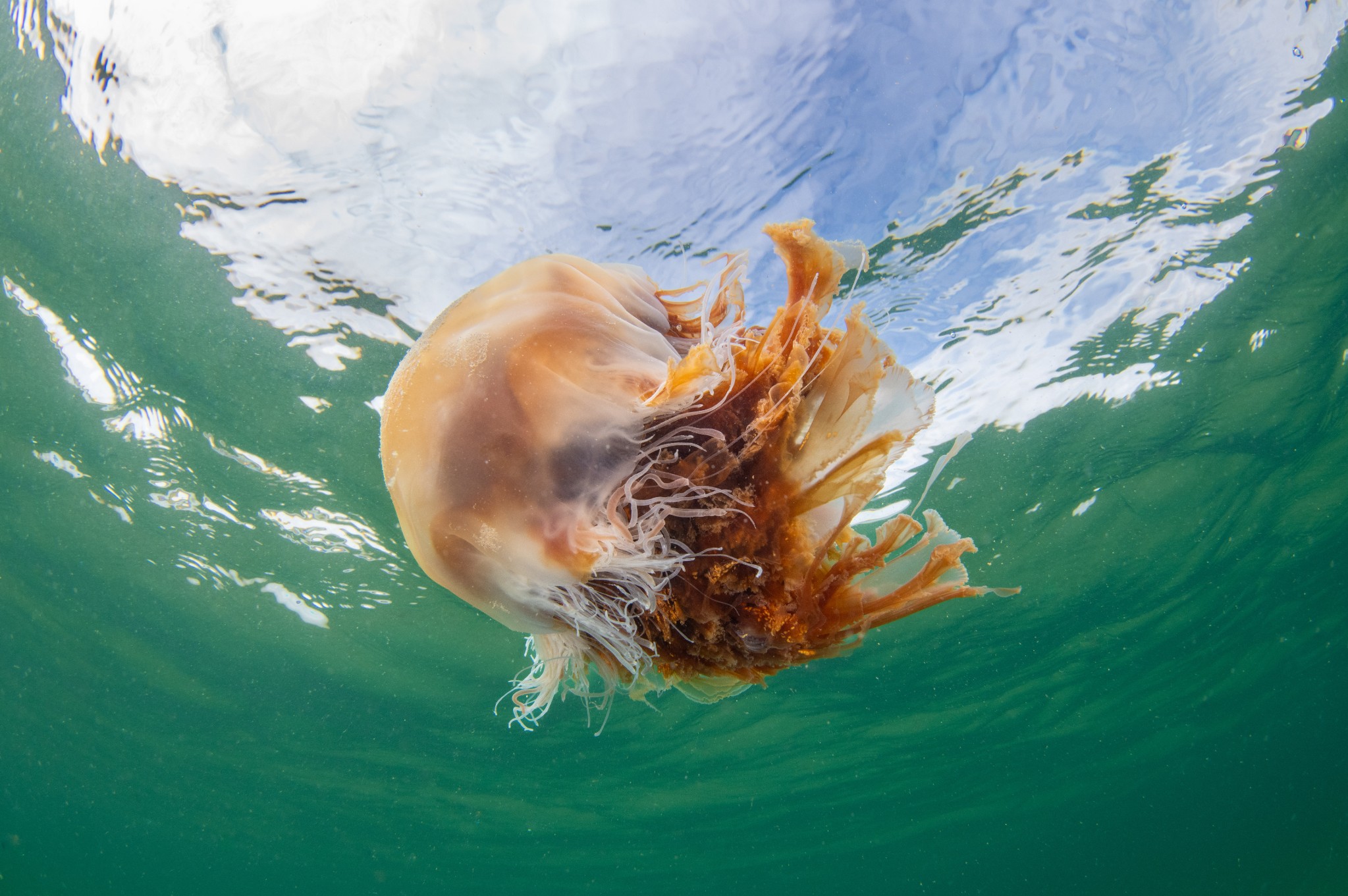With great swathes of cream-coloured flowers, meadowsweet signals the last hurrah of summer.
We see it everywhere as we drive on the more rural roads, lining the verges and inhabiting whole fields as well as being one of the main floral inhabitants of wetlands and lochsides. As beautiful as it is it also makes me feel a little melancholic, as change is in the air as we head towards the end of the season.
On a recent walk alongside a burn one creature was making use of the meadowsweet, picking small invertebrates from the red coloured stalks, filling its small beak with prey until it could carry no more, then dropping into the thick vegetation below. I had heard it before I saw it - maybe just as well as this bird is a notorious ‘skulker’; the sedge warbler.
Sedge warblers are fairly common throughout Orkney in the right habitats. For example, look straight ahead from the RSPB Birsay Loons hide towards the reed bed and you have an excellent chance of seeing one flitting about in the tall reeds. This is equally true in shrubby willows next to lochs, or thick meadowsweet alongside burns and marshy fields.
Once you do hear one, then see one, it pays to stay in the same spot as it will no doubt disappear into cover. Have faith though, it will reappear! You can often get quite close to them in this manner and you’ll be able to easily identify it by its creamy coloured eye stripe.
This bird clearly has mouths to feed, perhaps up to five of them, so it has a lot of work to do. Sedge warblers will leave by the end of August and have a long journey ahead of them, wintering south of the Sahara.
Like the vast majority of burns here this one empties into the sea (some burns run from loch to loch). Along the foreshore, as well as the thick growth of sea mayweed flowers, another flower is present, this one growing straight out of the sand. Sea rocket appears delicate and sturdy all at once. It’s quite a tall plant, certainly in relation to the oysterplant which likes to hug the sand and spread out rather than up. The four-petalled flowers can be pink or white or a mixture of both and sit atop flesh stalks and tough, rubbery-looking seed pods. It’s the seed pods that I marvel at most; this is a flower that has to tolerate a lot of salt exposure or indeed even immersion in sea water given its position on the shore. Once the pods are ready to drop its seeds it will rely on the sea to disperse them.
There are lovely displays of them at the moment and they can be easily found along the sea wall at Scapa beach, Eastside (Newark) in South Ronaldsay, and Halley beach in Deerness, to name a few.
Offshore I can see one of my favourite creatures, one which hasn’t endured the greatest of fortunes in Orkney over the last decade or so; the harbour seal. No doubt it saw me before I saw it but more accurately, I should say ‘they’ saw me as this is a mum and pup, then two mums and two pups, and they are a delight to see. Harbour seals are both wary and inquisitive, whilst hauled out they deserve our caution and respect as too close an approach will see them slip into the water. If they spot you first however, they will often appear very close to the water’s edge as you walk along the shore, curiosity having got the better of them.
The pattern and colour of their pelage varies greatly, especially so between one of the mother’s here and her pup. She is a ginger beige colour and the pup charcoal, almost black. The two pups splash and play together and I can’t help thinking Orkney needs every new pup it can get as the population has fallen by 85% in the last 25 years. I’ve spent a lot of time photographing and filming its cousin, the grey seal, and it’s striking how much more capable the pup of the harbour seal is as it can swim almost straight after birth. Sometimes when you see a grey seal pup floundering around in the shallows having been coaxed into the sea by its mother you can’t imagine the graceful creature it will grow to become.
As I continue along the beach I come across a sight common at this time of year and its right at my feet, a large dinner plate-shaped orange blob. It’s a lion’s mane jellyfish that has washed ashore. My one regret this summer is not having had a chance to do much diving or snorkelling as I would love to see a lion’s mane jellyfish underwater, alive and pulsing before summer ends. This won’t be a sentiment felt by many in Orkney, especially swimmers who can receive a painful sting at the hands of the long tentacles that flow behind it.
So, this afternoon, I get my wetsuit on and head out in the shallow waters of Inganess beach. It’s not long before I find my jellyfish, and although not the largest example of its species, it’s still what I hoped for. The advantage I have over a swimmer of course is I can see it coming and so it’s easy for me to stay in front if it where I can admire the dark brown and amber body, delicate and petticoat like, as it floats past in the gentle current.
I drop down underneath it and watch as the sun twinkles through the water, illuminating its body, and bid it goodbye knowing that this ocean wanderer will soon be wandering no more.
Raymond is a wildlife filmmaker who also offers bespoke Orkney wildlife tours and one-to-one wildlife photography tuition. Find out more via his official website. You can also find him on Facebook, Twitter and Instagram.
